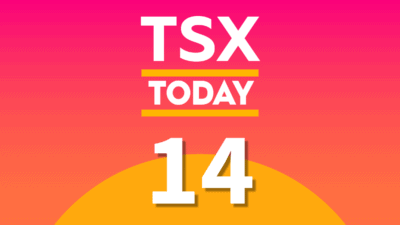An article in the Globe and Mail on Monday gave an update on an ongoing investigation on mutual fund fees by the Ontario Securities Commission. What was the update? Well, the investigation is ongoing.
In fact the study is nowhere near a conclusion, despite 16 months of “progress” thus far. So with that in mind, perhaps we at The Motley Fool can help just a little bit by comparing mutual fund fees at the different major banks.
Canadian equity funds
The following table compares the annual fee on each bank’s flagship Canadian Equity fund.
| Bank | Fund | Annual Fee | 10-Year Annual Return |
| RBC | RBC Canadian Equity Fund | 2.06% | 6.3% |
| TD | TD Canadian Equity Fund | 2.18% | 9.23% |
| Bank of Nova Scotia | Scotia Canadian Blue Chip Fund | 2.18% | 4.95% |
| Bank of Montreal | BMO Canadian Equity Fund | 2.39% | 6.44% |
| CIBC | CIBC Canadian Equity Fund | 2.39% | 4.1% |
| Average | 2.24% | 5.65% |
The “lowest fee award” goes to RBC (TSX: RY)(NYSE: RY), although the real winner is clearly TD (TSX: TD)(NYSE: TD), for having by far the best 10-year return.
The loser by both measures is CIBC (TSX: CM)(NYSE: CM). As an added bonus, CIBC also finishes last for transparency, since it was the only bank to hide the fund’s annual fee (the 2.39% number in the table above came from a third-party site).
The 10-year return for the iShares S&P/TSX Capped Composite Index ETF (TSX: XIC) is 8.12%, handily beating the average from the banks. In fact TD was the only bank to beat the index. So in general, Canadian investors are not getting good value.
So what should the OSC do? Capping fees is the first answer that comes to mind, but that would be too difficult to implement, and would be unfair to outperforming funds like TD’s. And price ceilings contradict fundamental economic principles; if investors are willing to pay high fees, they should be allowed to.
A better solution is to mandate increased transparency. Funds should show the fee clearly, and display it as an “Annual Fee”, rather than the more technical term “MER”. Fund providers should also be forced to show the benchmark’s returns alongside their funds’ performance, so investors can clearly see what they get for their money.
Foolish bottom line
For those of you who prefer to buy funds rather than stocks, buying the index is never a bad idea – a previous article highlights the three best ways to do so. Just don’t expect any help from the banks.
 Spring Sale
Spring Sale







